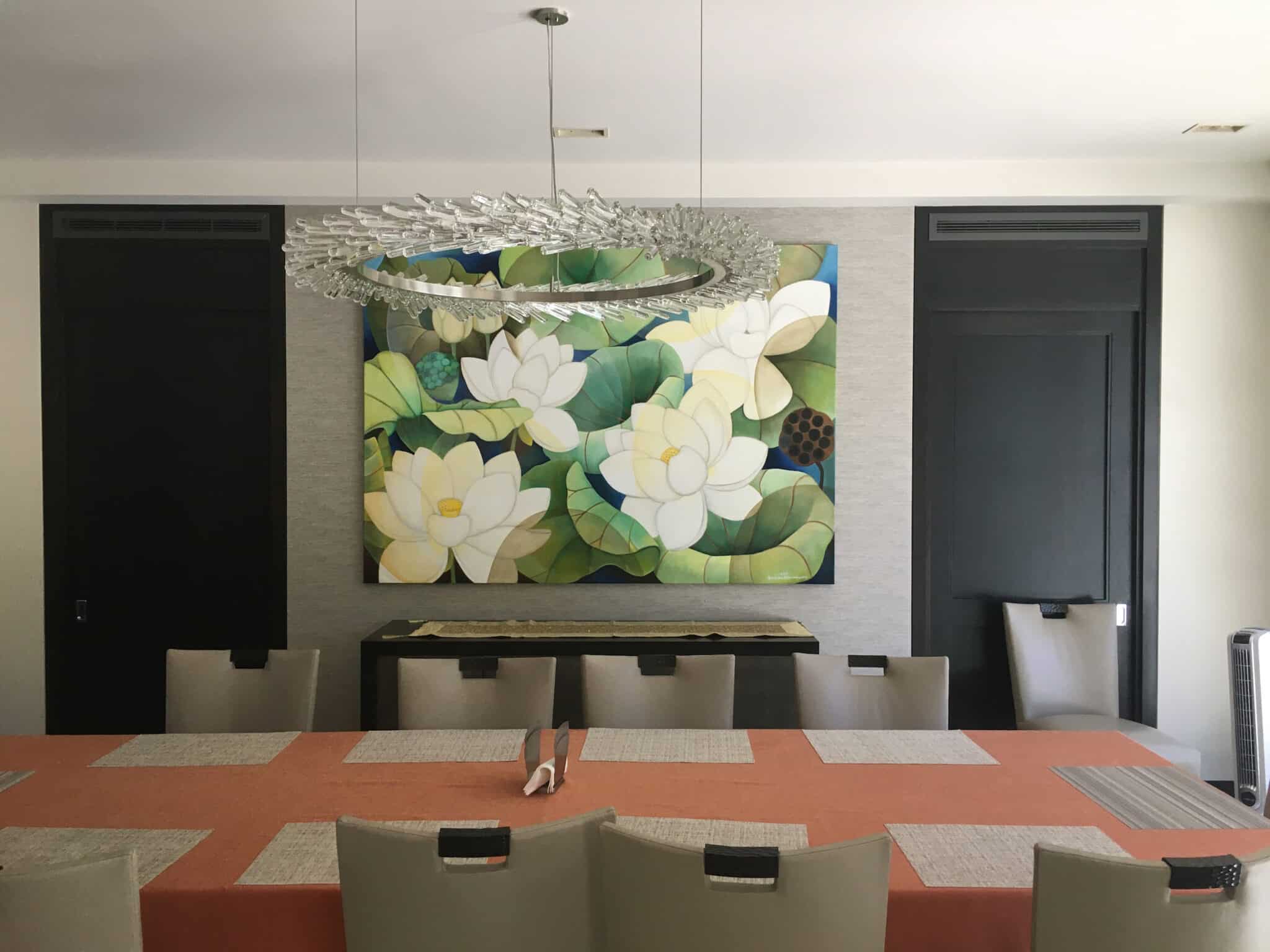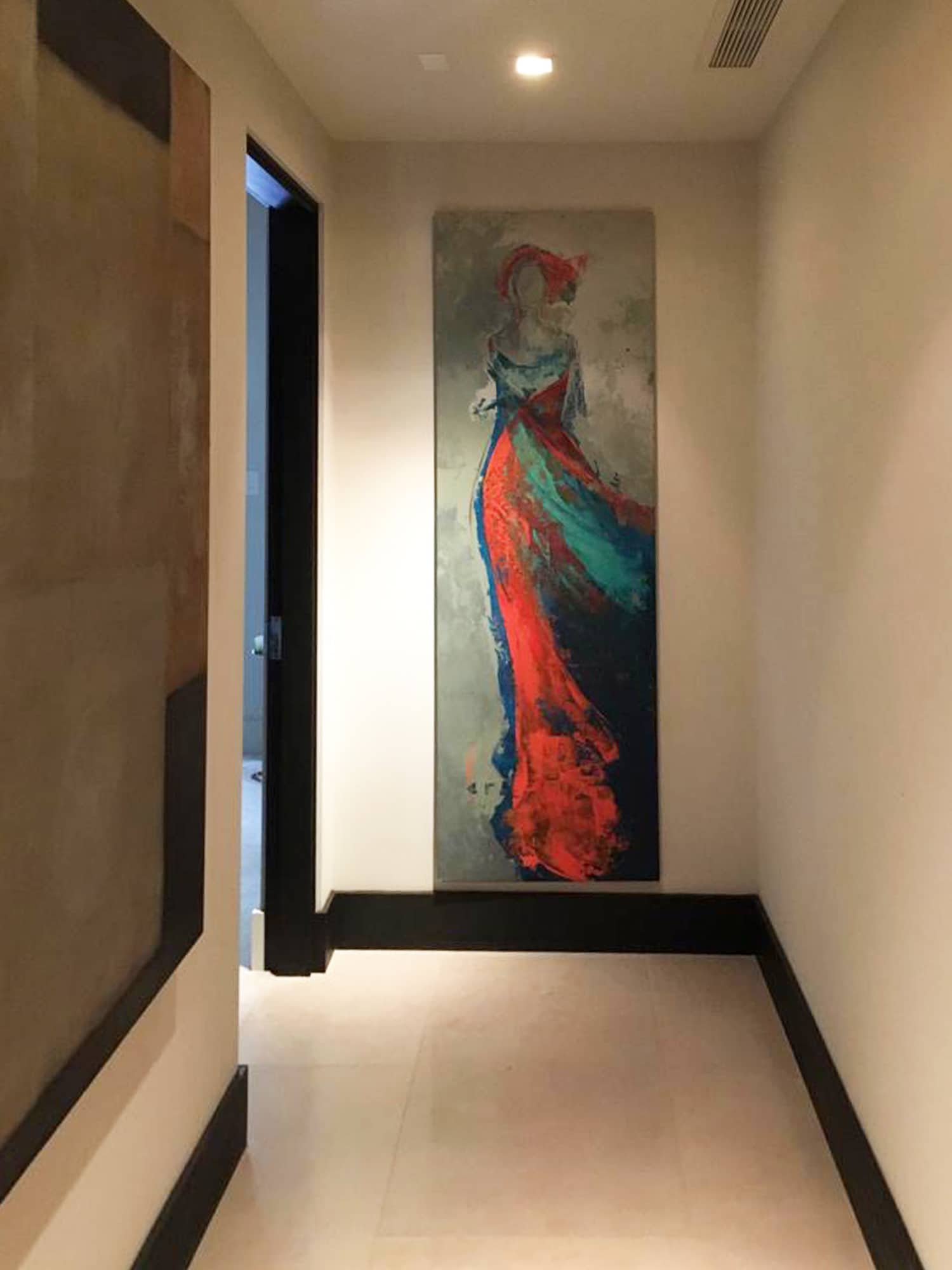
Layering Art in Your Home
When buying art, I believe there are two main criteria to keep in mind. The first is purchasing a piece that speaks to you, and the second — but just as important — is making sure that it works in your space. That’s why we give local clients the option of trying the art in their homes before making a decision to buy, while US clients outside of the Bay Area have the option of returning the painting if it does not work for them (please note that conditions apply).
Ever so often, clients ask me questions like: If my wall is a certain size, what size painting will look best? I have just moved and all the walls are blank, so how should I go about selecting artworks that will complement each other?
These are all great questions, and over the years, I have developed some tried-and-true guidelines on how to ‘layer’ art in your home.
Identify your ideal ambience.
Would you like the ambience of your home to be calm and meditative? Warm and cozy? Minimalist? Elegant? Or something else entirely? There is no right or wrong when it comes to the vibe you envision.

Look at the space as a whole, not just one wall.
When advising clients, some of the factors I consider are:
- The height of the ceiling (9 feet is common in the US, but some ceilings are 12 or 15 feet which may require larger artworks)
- The colors of floors and walls
- The style, textures and colors of furniture
- The level of natural light in the space
For instance, a place that has high ceilings, lots of natural light and neutral walls will have more options in terms of the style of art, because we can consider stronger colors and larger paintings without making the space feel crowded.
Determine the overall style of the house.
Taking your furniture and fixtures into account, is the home modern with glass windows and clean lines or more traditional? Eichler or ranch? Your art should complement, not clash.

Emphasize a central point.
I always ask clients where they spend the most time as a family or with friends. In these ‘high priority’ areas, I look for a large, clean wall that can serve as the focal point in that space. Then, I identify high impact works for that wall, keeping in mind the client’s taste and the interiors.
Make sure the paintings ‘talk’ to each other.
If you have multiple works in the same space, make sure they complement each other aesthetically or thematically. The paintings should be ‘friends’ or at least ‘acquaintances’.
Hang paintings at a consistent, optimal height.
I often find clients tend to hang artworks too high, which can hinder the enjoyment of the painting. I recommend hanging artworks at a height where one can comfortably see and enjoy the painting — ideally the center of the artwork should be hung at your eye level, typically 57 to 60 inches.

Factor in the viewing distance.
From how far away will you usually view the artwork? For example, is it a wall at the end of a long hallway, or is it a wall with a closer viewing distance of 5-10 feet? I recommend:
- For longer viewing distances, a larger size and/or bolder painting that will capture the eye.
- For shorter viewing distances, a smaller size artwork or a piece with lots of textures or details that invites closer inspection.
Do not overcrowd the walls.
Each and every wall in a room does not need to be decorated! The space should not feel like there is a sensory overload, in which case our systems simply shut down. Art is best enjoyed through a few high quality works with lots of space to ‘breathe.’
Trust your instincts.
There is no right or wrong here – what I have shared above comes from my experience doing this as a gallerist and consultant for many years. Having said that, I do believe that it’s ultimately your home and it has to feel right to you. Use these guidelines but I would eventually trust your gut feeling and go with it.
While art is a matter of personal taste, interior design follows its own rules. These tips can guide the buying process, and I hope they help seamlessly integrate artwork you love into your home.
— Sonia Nayyar Patwardhan

Leave a Reply
You must be logged in to post a comment.